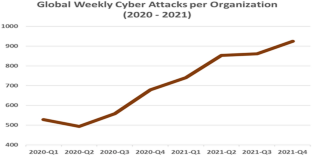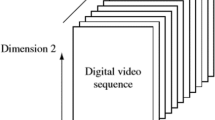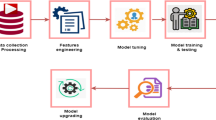Abstract
Humans have benefited greatly from technology, which has helped to raise standards of living and make important discoveries. But there are a lot of hazards associated with using it. The prevalence of digital video through mobile smartphone applications like WhatsApp and YouTube as well as web-based multimedia platforms are likewise gaining in importance as crucial. But there are also global security issues that are arising. These difficulties could cause significant issues, especially in cases where multimedia is a crucial factor in criminal decision-making, such as in child pornography and movie piracy. Consequently, copyright protection and video authentication are required in order to strengthen the reliability of using digital video in daily life. A tampered film may contain the relevant evidence in a legal dispute to convict someone of a violation or clear a guilty party of wrongdoing. Hence, to develop it is crucial to have reliable forensic techniques that would enhance the justice administration systems and enable them to reach just verdicts. This article discusses numerous forensic analysis fields, including network forensics, audio forensics, and video forensics. In this study, many algorithms such as Random Forest, Multilayer Perceptron (MLP), and Convolutional Recurrent Neural Networks (CRNN) are used for implementing different types of forensic analysis. Also, image fusion is used which can provide more information than a single image and extract features from the original images. This study came to the conclusion that the random forest provides the finest results for network forensic analysis with an accuracy of 98.02 percent. A lot of work has been done during the past years, through an analysis of current methods and machine learning strategies in the field of video source authentication and the study aims to provide a thorough summary of that work.


Similar content being viewed by others
References
Wen CY, Chen JK. Multi-resolution image fusion technique and its application to forensic science. Forensic Sci Int. 2004;140:217–32.
Ali Z, Imran M, Alsulaiman M. An automatic digital audio authentication/forensics system. IEEE Access. 2017. https://doi.org/10.1109/ACCESS.2017.2672681.
Gangwar A, Fidalgo E, Alegre E, Gonzáles V. Castro, pornography and child sexual abuse detection in image and video: a comparative evaluation, Proceedings of the 8th International Conference on Imaging for Crime Detection and Prevention, ISBN: 978-1-78561-687-7. 2017, pp. 37–42.
Perez M, Avila S, Moreira D, Moraes D, Testoni V, Valle E, Goldenstein S, Rocha A. Video pornography detection through deep learning techniques and motion information. Neurocomputing. 2017;230:279–93.
Slay J. Towards developing network forensic mechanism for botnet activities in the IoT based on machine learning techniques, Mobile networks and management. In: 9th international conference, MONAMI (2017), Melbourne, Australia, December 13–15; 2017. Proceedings. Springer. Vol. 235, p. 30.
Xiao J, Li S and Xu Q. Video Based Evidence analysis and extraction in digital forensics investigation. IEEE Access; 2019.
Hosler B, Mayer O, Bayar B, Zhao X, Chen C, Shackleford JA, Stamm MC. A video camera model identification system using deep learning and Fusion. In: IEEE International Conference on Acoustics, Speech and Signal Processing (ICASSP). IEEE; 2019. pp. 8271–8275.
Chhabra GS, Singh VP, Singh M. Cyber forensics framework for big data analytics in IoT environment using machine learning. Multimed Tools Appl. 2020;79:15881–900.
Orozco ALS, Huamán CQ, Álvarez DP, Villalba LJG. A machine learning forensics technique to detect post-processing in digital videos. Future Gener Computer Syst. 2020;111:199–212.
Qamhan MA, Altaheri H, Meftah AH, Muhammad G, Alotaibi YA. Digital audio forensics: microphone and environment classification using deep learning. IEEE Access. 2021. https://doi.org/10.1109/ACCESS.2021.3073786.
Sachdeva S, Ali A. Machine learning with digital forensics for attack classification in the cloud network environment. Int J Syst Assur Eng Manag. 2022;13(Suppl 1):S156–65.
Abbasi A, Javed AR, Yasin A, Jalil Z, Kryvinska N, Tariq U. A large-scale benchmark dataset for anomaly detection and rare event classification for audio forensics. IEEE Access. 2022. https://doi.org/10.1109/ACCESS.2022.3166602.
Akbari Y, Al-Maadeed S, Elharrouss O, Khelifi F, Lawgaly A, Bouridane A. Digital forensic analysis for source video identification: a survey. Forensic Sci Int: Digital Investig. 2022;41:301390.
Akbari Y, Al-Maadeed S, Almaadeed N, Al-ali A, Khelifi F, Lawgaly A, et al. A new forensic video database for source smartphone identification: description and analysis. IEEE Access. 2022. https://doi.org/10.1109/ACCESS.2022.3151406.
Neale C, Kennedy I, Price B, Yijun Yu, Nuseibh B. The case for zero trust digital forensics. Sci Int: Digit Investig. 2022;40:301352.
Funding
This article has not received any funding.
Author information
Authors and Affiliations
Corresponding author
Ethics declarations
Conflict of interest
It is stated by the authors that they have no conflicting interest.
Additional information
Publisher's Note
Springer Nature remains neutral with regard to jurisdictional claims in published maps and institutional affiliations.
This article is part of the topical collection “Advances in Computational Intelligence for Artificial Intelligence, Machine Learning, Internet of Things and Data Analytics” guest edited by S. Meenakshi Sundaram, Young Lee and Gururaj K S.
Rights and permissions
Springer Nature or its licensor (e.g. a society or other partner) holds exclusive rights to this article under a publishing agreement with the author(s) or other rightsholder(s); author self-archiving of the accepted manuscript version of this article is solely governed by the terms of such publishing agreement and applicable law.
About this article
Cite this article
Rajeev, A., Raviraj, P. An Insightful Analysis of Digital Forensics Effects on Networks and Multimedia Applications. SN COMPUT. SCI. 4, 186 (2023). https://doi.org/10.1007/s42979-022-01599-8
Received:
Accepted:
Published:
DOI: https://doi.org/10.1007/s42979-022-01599-8




